China's "North Pole" develops winter tourism programs to attract tourists
 0 Comment(s)
0 Comment(s) Print
Print E-mail Xinhua, January 11, 2023
E-mail Xinhua, January 11, 2023
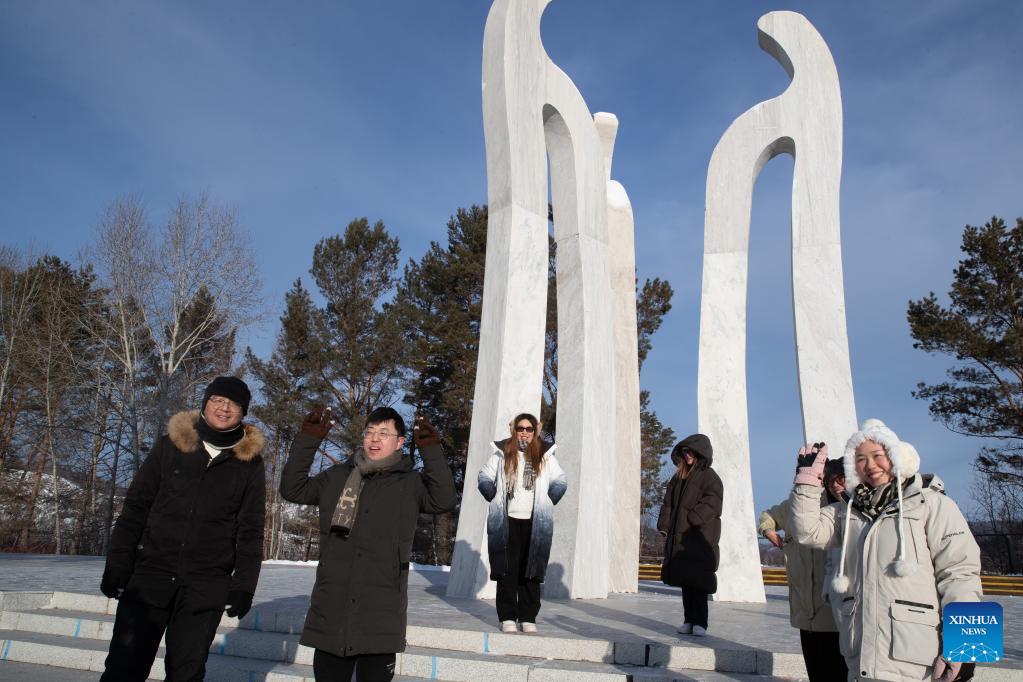
Tourists visit Beiji Village in Mohe, northeast China's Heilongjiang Province, Jan. 10, 2023.
Known as China's "North Pole," Mohe has an annual ice and snow period of up to eight months, with the lowest temperature reaching minus 50 degrees Celsius. By virtue of its natural conditions, the city has developed a variety of winter tourism programs in recent years, attracting tourists to experience an "extremely cold journey." (Xinhua/Zhang Tao)

Tourists have fun at an ice and snow park in Beiji Village of Mohe, northeast China's Heilongjiang Province, Jan. 7, 2023.
Known as China's "North Pole," Mohe has an annual ice and snow period of up to eight months, with the lowest temperature reaching minus 50 degrees Celsius. By virtue of its natural conditions, the city has developed a variety of winter tourism programs in recent years, attracting tourists to experience an "extremely cold journey." (Xinhua/Zhang Tao)
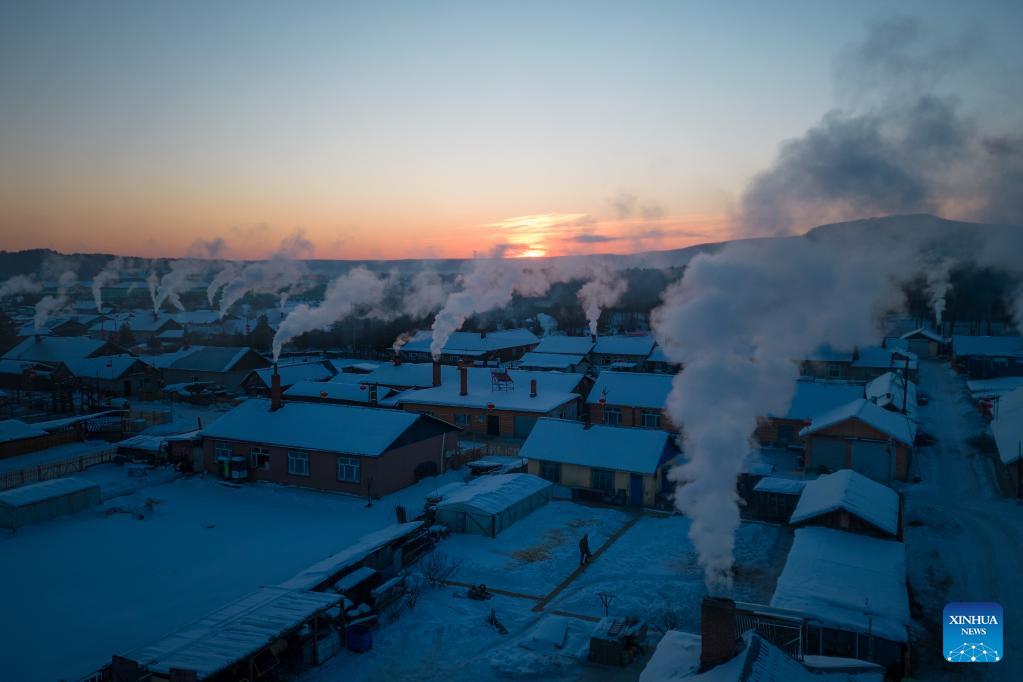
This aerial photo taken on Jan. 8, 2023 shows an early morning view of Beiji Village in Mohe, northeast China's Heilongjiang Province.
Known as China's "North Pole," Mohe has an annual ice and snow period of up to eight months, with the lowest temperature reaching minus 50 degrees Celsius. By virtue of its natural conditions, the city has developed a variety of winter tourism programs in recent years, attracting tourists to experience an "extremely cold journey." (Xinhua/Zhang Tao)

This photo taken on Jan. 7, 2023 shows a night view of an ice and snow park in Beiji Village of Mohe, northeast China's Heilongjiang Province.
Known as China's "North Pole," Mohe has an annual ice and snow period of up to eight months, with the lowest temperature reaching minus 50 degrees Celsius. By virtue of its natural conditions, the city has developed a variety of winter tourism programs in recent years, attracting tourists to experience an "extremely cold journey." (Xinhua/Zhang Tao)
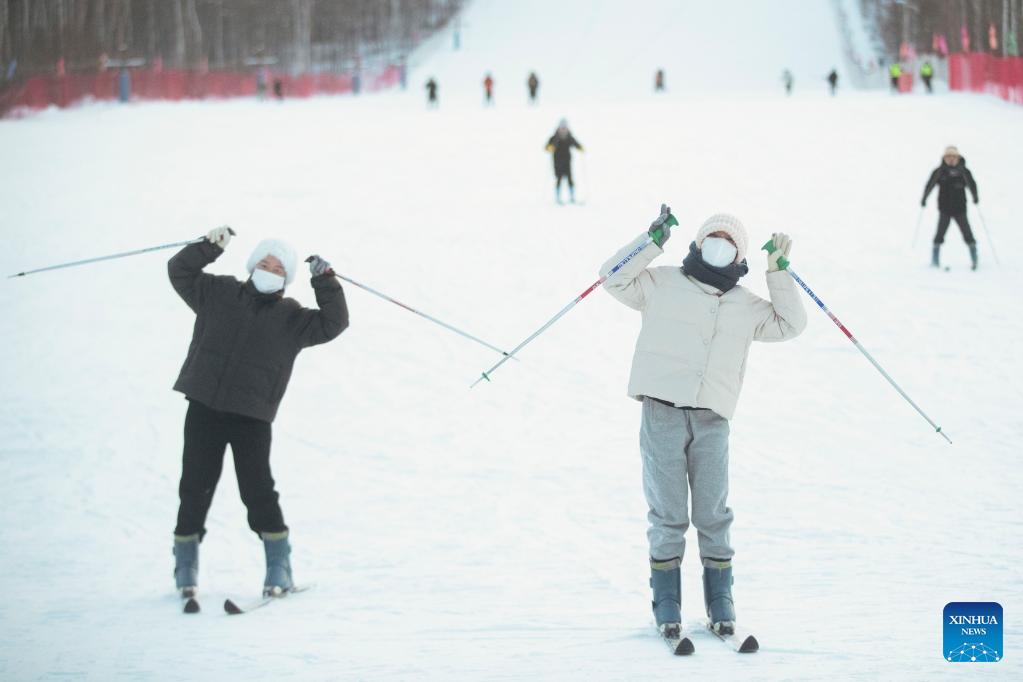
Tourists enjoy skiing at a ski resort in the Beiji Village in Mohe, northeast China's Heilongjiang Province, Jan. 7, 2023.
Known as China's "North Pole," Mohe has an annual ice and snow period of up to eight months, with the lowest temperature reaching minus 50 degrees Celsius. By virtue of its natural conditions, the city has developed a variety of winter tourism programs in recent years, attracting tourists to experience an "extremely cold journey." (Xinhua/Zhang Tao)

Shi Ruijuan, owner of a B&B guesthouse, sweeps the ground in Beiji Village of Mohe, northeast China's Heilongjiang Province, Jan. 7, 2023.
Known as China's "North Pole," Mohe has an annual ice and snow period of up to eight months, with the lowest temperature reaching minus 50 degrees Celsius. By virtue of its natural conditions, the city has developed a variety of winter tourism programs in recent years, attracting tourists to experience an "extremely cold journey." (Xinhua/Zhang Tao)

This aerial photo taken on Jan. 7, 2023 shows a night view of an ice and snow park in Beiji Village of Mohe, northeast China's Heilongjiang Province.
Known as China's "North Pole," Mohe has an annual ice and snow period of up to eight months, with the lowest temperature reaching minus 50 degrees Celsius. By virtue of its natural conditions, the city has developed a variety of winter tourism programs in recent years, attracting tourists to experience an "extremely cold journey." (Xinhua/Zhang Tao)

Tourists experience horse-drawn sleigh rides in Beiji Village of Mohe, northeast China's Heilongjiang Province, Jan. 10, 2023.
Known as China's "North Pole," Mohe has an annual ice and snow period of up to eight months, with the lowest temperature reaching minus 50 degrees Celsius. By virtue of its natural conditions, the city has developed a variety of winter tourism programs in recent years, attracting tourists to experience an "extremely cold journey." (Xinhua/Zhang Tao)
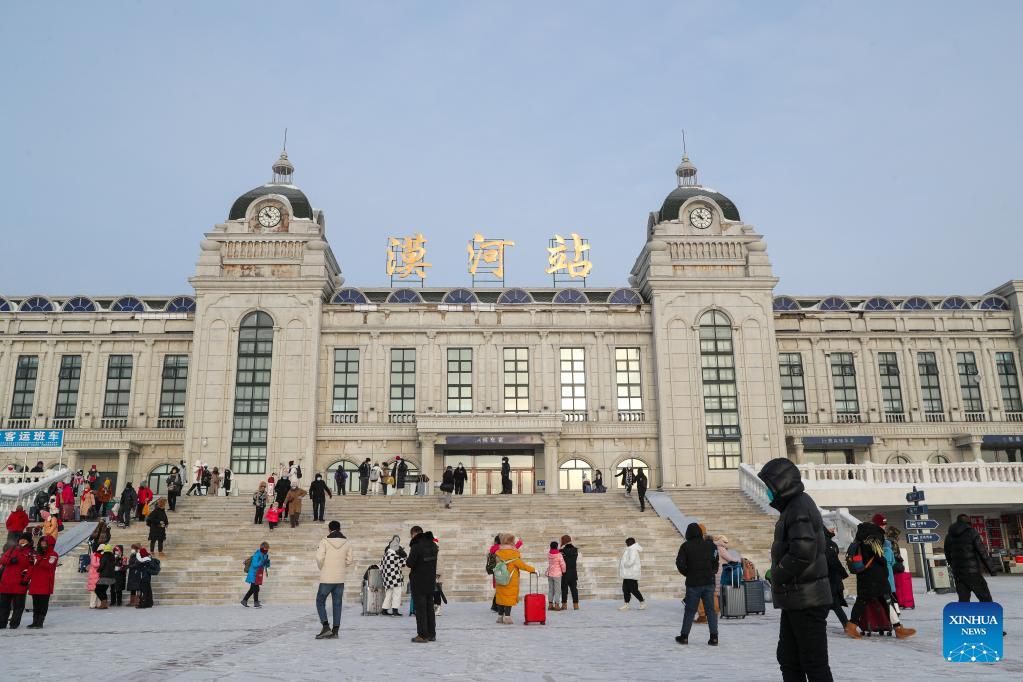
Tourists pose for photos in front of the Mohe Railway Station in Mohe, northeast China's Heilongjiang Province, Jan. 7, 2023.
Known as China's "North Pole," Mohe has an annual ice and snow period of up to eight months, with the lowest temperature reaching minus 50 degrees Celsius. By virtue of its natural conditions, the city has developed a variety of winter tourism programs in recent years, attracting tourists to experience an "extremely cold journey." (Xinhua/Zhang Tao)

Tourists have fun at an ice and snow park in Beiji Village of Mohe, northeast China's Heilongjiang Province, Jan. 7, 2023.
Known as China's "North Pole," Mohe has an annual ice and snow period of up to eight months, with the lowest temperature reaching minus 50 degrees Celsius. By virtue of its natural conditions, the city has developed a variety of winter tourism programs in recent years, attracting tourists to experience an "extremely cold journey." (Xinhua/Zhang Tao)
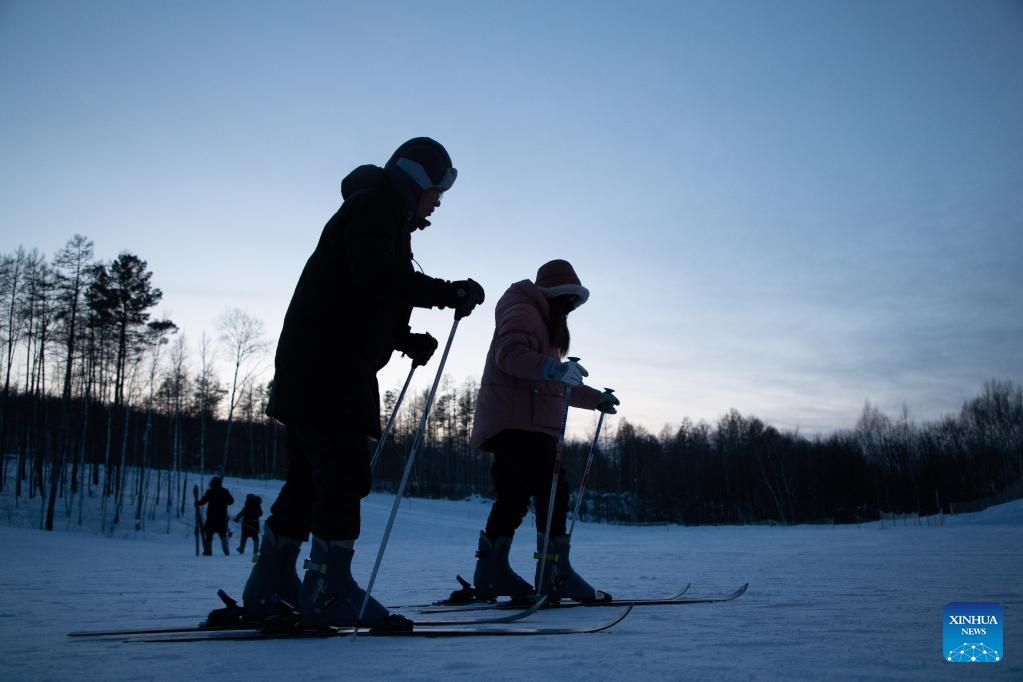
Tourists enjoy skiing at a ski resort in the Beiji Village in Mohe, northeast China's Heilongjiang Province, Jan. 7, 2023.
Known as China's "North Pole," Mohe has an annual ice and snow period of up to eight months, with the lowest temperature reaching minus 50 degrees Celsius. By virtue of its natural conditions, the city has developed a variety of winter tourism programs in recent years, attracting tourists to experience an "extremely cold journey." (Xinhua/Zhang Tao)


